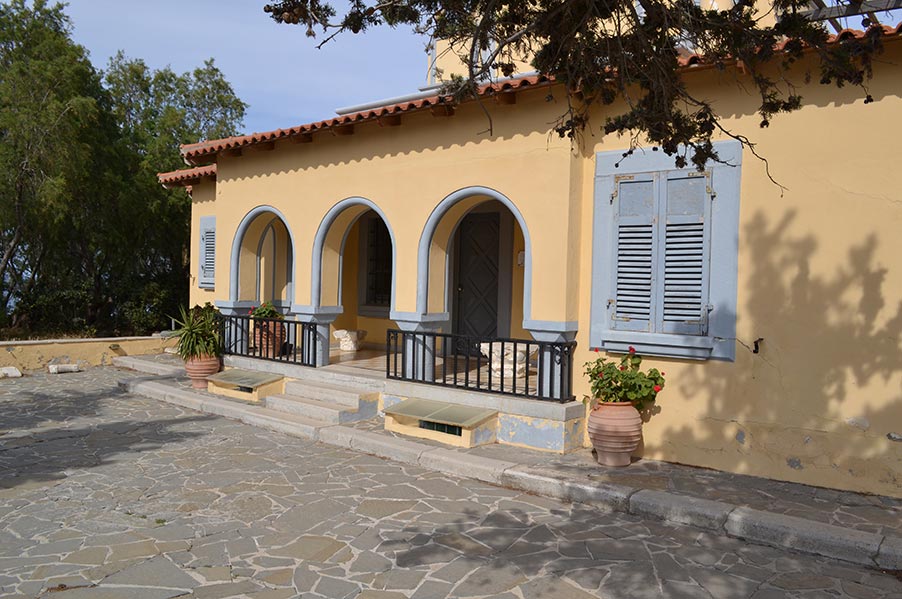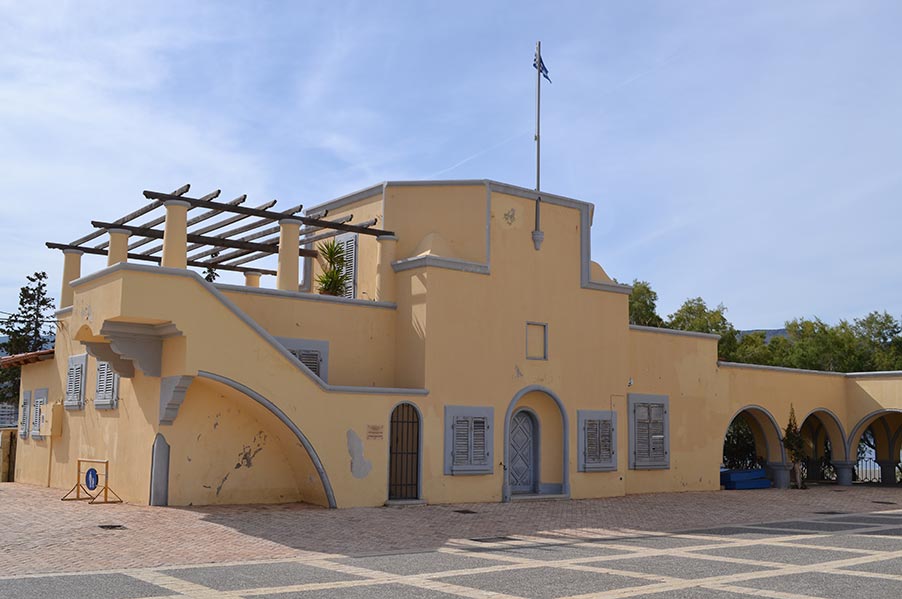- Home
- Karpathos
- Karpathos Entries
- Archaeological Museum
Description
The archaeological Museum of Karpathos is located in the west side of the prefecture building of Karpathos and Kasos islands (Eparhio). Inside the three small rooms you can see findings from prehistoric to the early Christian and medieval times of the island.
In the first room the exhibition starts with the help of a chronological diagram and a history slide show with the monuments of the island. The Section of prehistoric times includes a few findings from the Neolithic era (Obsidian blades, shells and cast stone figurine of a female deity, findings from Minoan farmhouse in southern Karpathos, finds from recent excavations in the Minoan/Mycenaean settlement in the town which revealed three ceramic ovens, burial set from the necropolis of the village, as well as representation of the tomb of the early 15th century BC from the excavations in Arkasa.
In the second room, the presentation moves on to the historical years. The exhibits are spread geographically across the three ancient cities of the island, Arkasia, Vrykous, and Potidaion, nowadays Pigadia, seaport and territorial enhancement during the Hellenistic period the town of Karpathos. The exhibits (mainly vessels from Hellenistic times, parts of the geometrical vessels and funerary of classical times from Aperi, little sculptures from Pigadia, mock-up of the Roman cistern in Lefkos) will accompany the texts listed in the history of the island, the topography of ancient cities, as well as important historical inscriptions of Karpathos.
The last third room, includes representative finds from early Christian basilicas and settlements of the island (vases, amphorae, coins, architectural elements, slide show with mosaic floors), with the help of which highlighted the economic and artistic flourishing of the island during this period. Reference to the Byzantine era of the island is done with rare icons from the churches of Mount Olympus (8th-9th c.) and the report on artificial niche with a depiction of His mural apotoichismenis of the 13th century. The image will fill out with historical figures from the season, during which the island belonged to the Kornaros family (14th-16th century), the piracy era, and the topography of the island, as depicted in tourist maps of the 15th and 16th century.
Unfortunately there is no certain time that you can find the museum open as there are no official opening hours...

